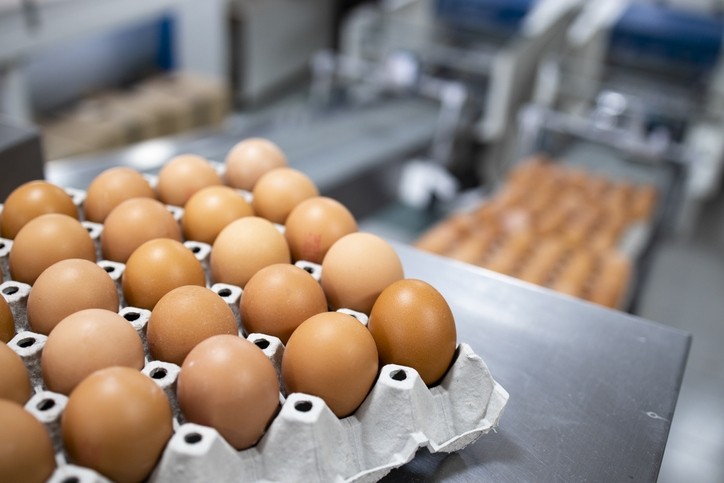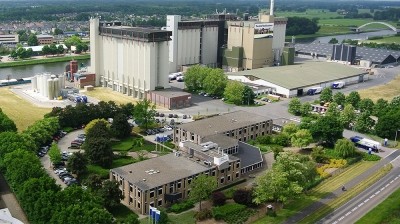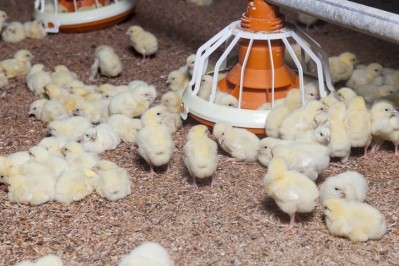Lower calcium and phosphorus levels in layer pullet diets could improve eggshell quality

They also saw a diet with reduced calcium and phosphorus levels led to lower bone mineralization during rearing, but, nevertheless, improved eggshell quality at week 32.
The research team, consisting of poultry experts at ForFarmers and Trouw Nutrition and the animal nutrition group at Wageningen University, examined the effects of dietary calcium and phosphorus level, and feed form during rearing on growth performance, bone traits and egg production in layer pullets from birth up to 32 weeks of age.
Their rationale for doing so was that there is limited data on the dietary requirement of calcium (Ca) and phosphorus (P) in laying pullets during rearing and the cross-over effects on egg production at later ages.
The research was published in Poultry Science.
Impact of manipulating dietary calcium and phosphorus levels
An oversupply of dietary Ca to growing chickens has been shown to decrease growth rate in both broilers and egg-type pullets, they noted. Meanwhile, an oversupply of dietary P is costly to the poultry industry and leads to an of excessive P discharge to the environment through manure application to soils, said the authors.
Previous work, according to the team, showed that it is possible to reduce phosphorus in the diets of layer pullet without impairing growth or affecting bone characteristics.
“Also our research group found in a previous study no negative effects on growth and bone characteristics of low P diets in egg-type pullets fed from 16-27 weeks of age, but low dietary P resulted in small negative effects on egg weight and egg mass production during the start of lay (Dijkslag et al., 2019).
“Bradbury et al. (2014) showed significant interactions of Ca and P levels in broiler diets. At low Ca and high P, as well as high Ca and low P diets, birds had reduced average daily feed intake (ADFI), and average daily gain (ADG), poorer feed conversion ratio (FCR) and lower tibia ash. This proves that the dietary Ca to P ratio is an important factor in growing bird nutrition.
“It has been shown in broilers that chickens are able to adapt to early dietary changes in P and Ca through improvement of digestive efficiency in a later phase, and the extent of the compensation in terms of growth performance and bone mineralization depends on the P and Ca levels in the subsequent diets (Rousseau et al., 2016). Punna and Roland (1999) showed that low dietary P levels during the rearing phase of egg-type pullets did not impair egg production performance, when fed sufficient P during the laying period.”
Since feed form and dietary fiber, both source and structure, may affect feed intake and digestive efficiency, it is likely that these factors could affect net mineral intake and metabolism as well, said the team.
Feed form offered to egg-type pullets has a strong effect on bird performance, said the team, citing earlier work. Several trials, they noted, showed that, compared to mash, pelleted (Deaton et al., 1988; Frikha et al., 2009a,b) or crumbled feed (Guzmán et al., 2015a; Saldaña et al., 2015a,b) resulted in an increased ADG due to a higher ADFI.
Additionally, feeding pelleted diets reduced the relative weight of the gastrointestinal tract (GIT) and increased gizzard pH, due to the decreased dietary particle size, as occurred when the diets were pelleted (Frikha et al., 2009a; Saldaña et al., 2015a), wrote the authors.
They also reported the use of fiber in poultry diets has gained attention in recent years, and that studies have shown that moderate amounts of fiber (2 to 4%) in the diet of egg-type pullets improves bird performance, although they stressed that the effect of different fiber sources varies (Guzmán et al., 2015a).
Methodology
So the researchers decided to evaluate high and low combined dietary Ca and P (Ca-P) levels, fed as mash or crumbles, with or without coarse oat hulls (OH) on growth, bone characteristics and gizzard development during the rearing period from 0-16 weeks of age and their cross-over effect on laying performance and egg shell quality from 19-32 weeks of age.
Some 1,380-day old female Bovans Brown egg-type pullets were obtained from a commercial hatchery and the birds were housed in a semi-commercial rearing facility, until 16 weeks of age, when the birds were then transferred to an experimental layer house facility
Diet treatments included mash with inclusion of 3% finely ground wheat straw (MWS) vs. crumbles with inclusion of 3% finely ground wheat straw (CWS) vs. crumbles with inclusion of 3% unground OH as fiber source (COH), and Ca-P content (high vs. low levels).
Depending on the targeted feed form, diets were pelleted to 3mm pellet diameter and crushed to produce the crumbles or, alternatively only mixed to produce the mash, said the authors.
Results
The team saw that there was a clear age effect of feed form, as young pullets showed improved growth performance on crumbles prior to 11 weeks of age, although, thereafter, birds performed better on mash diets.
Replacing finely ground WS by OH as a fiber source in the diet did not affect performance during rearing, but some improvement was shown on FCR during lay.
Low dietary Ca-P during rearing had no clear effect on pullet development and egg production, but some improvements on eggshell quality were identified at 32 weeks of age. The researchers said this finding deserves further investigation to understand the mode of action behind it.
Low Ca-P during rearing led to lower bone mineralization at 11 and 16 weeks of age, although bone breaking strength was unaffected, they observed. “This indicates that the low Ca-P levels fed during rearing were slightly below the dietary level for maximum bone mineralization, but not for normal BW development.”
Source: Poultry Science
DOI: https://doi.org/10.1016/j.psj.2021.101130
Title: The effects of dietary calcium and phosphorus level, and feed form during rearing on growth performance, bone traits and egg production in brown egg-type pullets from 0 to 32 weeks of age
Authors: MA Dijkslag, RP Kwakkel, E Martin-Chaves, C Alfonso-Carrillo, C Walvoort, A Navarro-Villa














